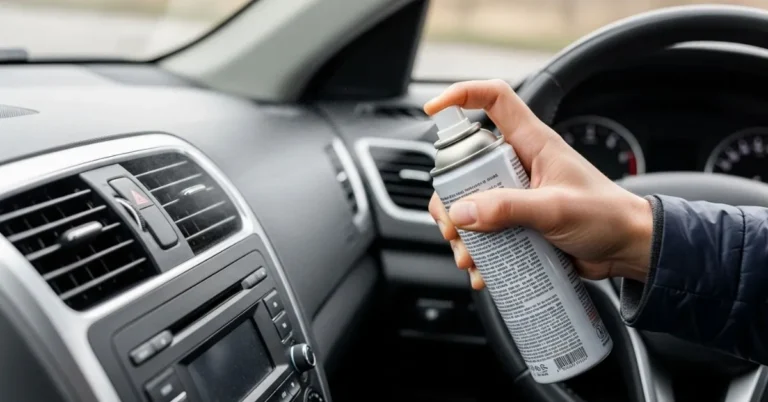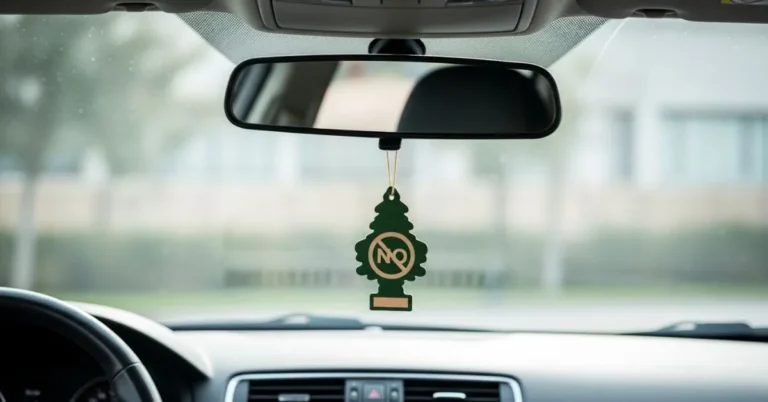
You’ve probably heard whispers of it in travel blogs or caught its name in an airline commercial: the Boeing 787 Dreamliner. It sounds sleek and futuristic almost too good to be true.
But let’s rewind a little. In the early 2000s, commercial air travel wasn’t known for comfort, sustainability, or innovation. Airlines were bleeding fuel costs, passengers were cramped and cranky, and jets were due for a revolution. Enter Boeing. They promised a plane redefining everything we expected from flying guess what? They delivered.
The Boeing 787 Dreamliner isn’t just another airplane it’s a marvel of modern engineering, an eco-conscious trailblazer, and a jet-setting revolution in the skies. Sure, you’ve heard it’s fuel-efficient and eerily quiet, but there’s a lot more to this aircraft than meets the eye and most travelers have no idea.
In this post, we’ll fly beyond the obvious with 10 jaw-dropping facts about the Boeing 787 Dreamliner that even seasoned travelers might not know. Fasten your seatbelt and return your tray table to its upright position because this will be one smooth ride through aerospace brilliance.
Contents
- 1 1. The Boeing 787 Dreamliner Cuts Fuel Use by Up to 20%
- 2 2. 50% of Its Structure is Made from Composite Materials
- 3 3. It Breathes Better Literally
- 4 4. Oversized Windows That Tint Themselves
- 5 5. The Quietest Ride in the Sky
- 6 6. The Overhead Bins Were Designed After Passenger Input
- 7 7. It’s the Most Technologically Advanced Cockpit Ever Built
- 8 8. It Has True Global Range Literally
- 9 9. It’s a Global Team Effort
- 10 10. Airlines Save Big And Pass It On (Sometimes)
- 11 FAQs: Boeing 787 Dreamliner
1. The Boeing 787 Dreamliner Cuts Fuel Use by Up to 20%
Let’s start with the biggest headline and the one Mother Earth would high-five. The Boeing 787 Dreamliner was engineered to be up to 20% more fuel-efficient than the aircraft it replaced, thanks to a blend of ultra-light composite materials, next-gen engines, and aerodynamic innovations.
Less fuel burned means lower CO₂ emissions per passenger mile. That’s a win-win for airlines, saving money, and eco-conscious travelers who cringe at their carbon footprint.
Did You Know? Over the aircraft’s lifetime, a single Dreamliner can save an airline more than $2.5 million annually in fuel costs alone.
Soft Promo: Want to explore the green side of aviation? Grab a copy of Flightpath to the Future: Sustainable Air Travel for a deep look at how jets like the 787 are changing the game.
2. 50% of Its Structure is Made from Composite Materials
Do you know how smartphones have become lighter and brighter over time? The Dreamliner is aviation’s version of that evolution.
Unlike traditional aircraft built mostly from aluminum, the Boeing 787 Dreamliner is made from 50% composite materials like carbon-fiber-reinforced plastic. The rest are titanium, aluminum, and a few fancy alloys.
Why it matters:
- Composites resist corrosion better than metal.
- They’re stronger and lighter.
- They bend more easily under stress (which makes for smoother rides).
Result? A more durable, flexible, fuel-efficient bird with fewer maintenance needs. Translation: more on-time departures and fewer headaches for passengers and airlines alike.
3. It Breathes Better Literally
Ever land after a 10-hour flight feeling like a dehydrated raisin? That’s because traditional aircraft cabins are pressurized to about 8,000 feet. But the Boeing 787 dreamliner pressurizes its cabin to 6,000 feet, allowing your body to absorb more oxygen.
Even better, the air is more humid than in older jets, thanks to an advanced electrostatic air filtration system. Combined with smoother air pressure, passengers report less jet lag, fewer headaches, and overall better flight wellness.
Soft Promo: Check out “The Science of Jet Lag & Air Travel” if you’re fascinated by how cabins affect your biology mid-flight.
4. Oversized Windows That Tint Themselves
Remember the struggle of yanking down those clunky window shades? The Dreamliner said goodbye to all that. Its windows are 30% larger than typical aircraft windows and feature electrochromic dimming you can tint them at the touch of a button.
Passengers can choose from five tint levels, from clear to deep blue. This allows for more natural light while reducing glare and helping your body clock adjust to different time zones. It’s sci-fi made real.
5. The Quietest Ride in the Sky
Noise pollution isn’t just annoying it’s physically tiring. The Boeing 787 Dreamliner is equipped with chevrons (zig-zag patterns) on the engine nacelles that reduce sound during takeoff and cruise. Onboard, sound-absorbing materials and improved insulation create a noticeably quieter cabin.
Studies show that Dreamliner flights record decibel levels up to 60% quieter than older jets.
Imagine whispering engines at 35,000 feet and fewer screaming babies because everyone’s just a little bit calmer. It’s not a dream it’s Dreamliner reality.
6. The Overhead Bins Were Designed After Passenger Input
It might not seem revolutionary, but overhead bins are a pain point in economy cabins. The Boeing team consulted real passengers during design to create bins that are:
- Larger (can fit a roller bag wheels-first)
- Easier to open and close
- Angled ergonomically to avoid head bumps
This detail might seem small, but it’s part of a broader design philosophy, making passenger comfort a top-tier goal.
Informational Pick: “The Human Factor in Aircraft Design” is an excellent read on how Boeing engineers incorporate user feedback.
7. It’s the Most Technologically Advanced Cockpit Ever Built
Pilots are living their best lives in the Dreamliner. With dual Head-Up Displays (HUDs), fly-by-wire control systems, touchscreen interfaces, and advanced flight monitoring, the Dreamliner cockpit looks more like something from Star Trek than Top Gun.
The systems also reduce pilot workload and increase safety during manual and auto-assisted operations.
8. It Has True Global Range Literally
The Boeing 787 Dreamliner was built to be a long-haul champion. Depending on the variant, its max range is 8,500–8,786 nautical miles, which is long enough to connect virtually any two major cities on Earth nonstop.
From Boston to Tokyo? LA to Cape Town? Done.
This capability opened new route possibilities for airlines, especially “long, thin” routes that previously weren’t profitable.
9. It’s a Global Team Effort
This aircraft is the ultimate international collaboration. Its parts are sourced globally:
- Fuselage sections from Japan
- Landing gear from France
- Wing tips from South Korea
- Doors from Sweden
- Engines from the UK
Boeing assembles everything in the U.S. (Everett, WA, and North Charleston, SC), but the global effort showcases how international aerospace innovation works in harmony.
Fun Fact: Each Dreamliner takes about 60 days from parts to flight-ready.
10. Airlines Save Big And Pass It On (Sometimes)
Airlines that operate the Boeing 787 Dreamliner consistently report double-digit percentage savings in operational costs. Why?
- Lower fuel use
- Reduced maintenance
- Quieter landings (fewer airport fees)
- Higher passenger satisfaction (repeat customers)
And yes, while that doesn’t always translate to lower ticket prices for you, airlines can open more profitable routes and offer more competitive pricing overall.
Bonus Fun Fact: The Name “Dreamliner” Was Chosen by the Public
That’s right you (and your fellow humans) helped name this aircraft. Boeing ran a public naming contest in the early 2000s, and “Dreamliner” won against other options like Global Cruiser and Stratoclimber.
Good choice, folks.
FAQs: Boeing 787 Dreamliner
1. Why is the Boeing 787 Dreamliner considered revolutionary?
It blends fuel efficiency, passenger comfort, advanced tech, and global range like no other aircraft. It’s an all-in-one innovation.
2. Which airlines fly the Boeing 787 Dreamliner?
Major carriers, such as United, American, Qatar Airways, British Airways, ANA, and Emirates, all operate Dreamliners.
3. Is the Dreamliner safe?
Yes, it’s certified under the most rigorous global safety standards and includes multiple redundant systems for safety.
4. Does the Dreamliner reduce jet lag?
Many passengers say yes, thanks to higher cabin humidity, lower altitude pressurization, and better lighting controls.
5. Can I tell if I’m flying on a Dreamliner when booking a ticket?
Usually! When selecting your flight, look for “787” in the aircraft type section. Seat maps also often give it away look for 3-3-3 or 3-2-3 layouts in economy.
Expert Thoughts: Flying Just Got Smarter, Cleaner, and Dreamier
Whether you’re a sky warrior with a million miles under your belt or a nervous flyer who appreciates comfort, the Boeing 787 Dreamliner changes the game.
It doesn’t just get you from Point A to B it redefines what air travel should be like in the 21st century: efficient, sustainable, peaceful, and dare we say pleasant.
So, next time you’re browsing for flights, give a little fist bump to the sky if you land a Dreamliner route. Trust us your body (and inner aviation nerd) will thank you.




